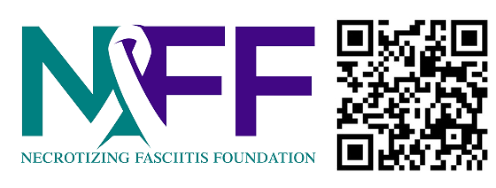for the Medical Community.
Diagnostic Information
for the Medical Community. Diagnostic Information
Making the Diagnosis of Necrotizing Soft Tissue Infections (NSTI)
Early diagnosis of NSTI can be very challenging as the early skin findings may be very subtle. Thus, it is important to have a high index of suspicion especially in patients at increased risk for NSTI and among those presenting with rapid progression of disease. This document seeks to raise awareness of the presenting signs and symptoms that may manifest in this disease. Patients may manifest some but not all of these findings.
Patients at Increased Risk
While NSTI can occur in anyone even without underlying risk factors, the following conditions have been associated with increased risk of NSTI:
· Diabetes
· Obesity
· Injection drug use
· Peripheral vascular disease
· Immune suppression
· Contaminated surgical wounds
· Deep Puncture wounds
Signs and Symptoms
· Pain out of proportion to the physical findings
· Rapid progression despite antibiotic therapy
· Subcutaneous gas or crepitus
· Cutaneous gangrene (blue/black discoloration of the skin)
· Blistering or sloughing of the skin
· Firm, woody induration of the skin and soft tissues
· Edema of the entire limb
Concerning laboratory findings
· Unusually high or low white blood cell count
· Hyponatremia
· New elevations in creatinine consistent with Acute Kidney Injury
· Elevated C-Reactive protein
Early intervention is important therefore if NSTI is suspected we recommend rapid administration of broad spectrum antibiotic and urgent surgical consultation to consider operative debridement.
Credit: Dr. Eileen Bulger, Medical Contributor
